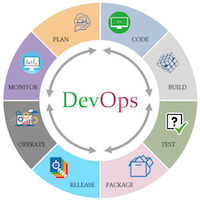#Nagios Tutorial for Beginners
Explore tagged Tumblr posts
Text
From Zero to Hero: A Beginner's Journey into Nagios Monitoring

Are you new to system monitoring and looking to understand how to keep your IT infrastructure running smoothly? Nagios, a powerful tool, can help you achieve just that. This beginner's tutorial will guide you through the basics of setting up and using Nagios effectively.
What is Nagios?
Nagios is an open-source software application that monitors systems, networks, and infrastructure components. It provides insights into the health and performance of your IT environment by continuously checking specified parameters.
Getting Started
Installation: Begin by installing Nagios on your server. Follow the installation instructions for your operating system, ensuring all prerequisites are met.
Configuration: After installation, configure Nagios to monitor your devices and services. This involves defining hosts (servers, routers, switches) and services (CPU usage, disk space, HTTP response).
Monitoring: Once configured, Nagios will start monitoring your infrastructure. It will alert you when issues arise, such as high CPU usage or a server outage, helping you address problems proactively.
Tips for Effective Monitoring
Regular Checks: Set up regular checks to monitor critical aspects of your infrastructure.
Alerting: Configure alert notifications to promptly respond to issues.
Dashboard: Use Nagios' dashboard to visualize data and trends for better decision-making.
Conclusion
By mastering Nagios basics, you can ensure your IT systems operate smoothly and minimize downtime. Ready to get started? Check out this Nagios tutorial for beginners for detailed steps and examples.
Learning to monitor effectively with Nagios is a valuable skill that enhances IT operations and keeps your business running smoothly.
0 notes
Text

Discover the basics of Nagios with our beginner-friendly tutorial. Learn how to set up, configure, and effectively monitor your IT infrastructure to ensure optimal performance and uptime.
0 notes
Text
DevOps Tutorial | A Step-by-Step Guide For Beginners
DevOps Tutorial

The DevOps is the combination of two words, one is Development and other is Operations. It is a culture to promote the development and operation process collectively.
The DevOps tutorial will help you to learn DevOps basics and provide depth knowledge of various DevOps tools such as Git, Ansible, Docker, Puppet, Jenkins, Chef, Nagios, and Kubernetes.
What is DevOps?
DevOps is a combination of two words, one is Software Development, and the second is Operations. This allows a single team to handle the entire application lifecycle, from development to testing, deployment, and operations. DevOps helps you to reduce the disconnection between software developers, quality assurance (QA) engineers, and system administrators.
Why DevOps?
Before going further, we need to understand why we need DevOps over the other methods.
The operation and development team worked in complete isolation.
After the design-build, the testing and deployment are performed respectively. That's why they consumed more time than actual build cycles.
Without the use of DevOps, the team members are spending a large amount of time on designing, testing, and deploying instead of building the project.
Manual code deployment leads to human errors in production.
Coding and operation teams have their separate timelines and are not in synch, causing further delays.
DevOps History
In 2009, the first conference named DevOpsdays was held in Ghent Belgium. Belgian consultant and Patrick Debois founded the conference.
In 2012, the state of DevOps report was launched and conceived by Alanna Brown at Puppet.
In 2014, the annual State of DevOps report was published by Nicole Forsgren, Jez Humble, Gene Kim, and others. They found DevOps adoption was accelerating in 2014 also.
In 2015, Nicole Forsgren, Gene Kim, and Jez Humble founded DORA (DevOps Research and Assignment).
In 2017, Nicole Forsgren, Gene Kim, and Jez Humble published "Accelerate: Building and Scaling High Performing Technology Organizations".
For More Information Visit: DevOps Tutorial
0 notes
Text
Best Devops Online Training
Are you looking to update yourself with the Best Devops Online Training ? Join Tektutes to make your dreams come true and to kick-start your career. Today, DevOps is one of the leading technologies adopted by most of the organizations globally. For which a number of vacancies available for DevOps-related roles. Get DevOps Online Training & certification to establish your skills in DevOps and make yourself suitable for the DevOps openings.

DevOps is the fastest-growing methodology that connects the gap between software developers and operations. We will help you to become a specialist in the ideology of nonstop development and operation, inter-team teamwork, automation of configuration management, and IT service alertness, by up to date DevOps tools such as Docker, Git, Maven, Jenkins, Ansible, Cucumber, TeamCity, Puppet, Kubernetes and Nagios.
The Tektutes DevOps Online training is industry-centric and merges a thorough theoretical set of courses with real-time coursework and handy projects. This will guarantee that while learner gets a high-quality basic knowledge of the lessons and they will also be skillful at methodology with the real-life procedure and real-life situations
DevOps training learners will become specialists in resolving intricate industry issues through the methodology to bring about brilliance and modernization
There is a continuous increase in requirement for proficient people who can work on both the software developmental as well as operational side. E-commerce industries, software companies, telecom companies etc. are using DevOps globally. In today’s market DevOps engineers are one of the most highly paid software specialized across the industries.
Related Searches: best devops online training,devops training,devops tools,devops course in hyderabad,devops online training,devops tutorial,devops tutorial for beginners,docker training,devops engineer,devops engineer certification
For More Details Register Here: https://forms.gle/cZJe44NcqML9SEwq6 Contact us: +91 9032453453 Mail us: [email protected] Visit us: https://tektutes.com/
#bestdevopsonlinetraining#devopstraining#devopstools#devopscourseinhyderabad#devopsonlinetraining#devopstutorial#devopstutorialforbeginners#dockertraining#devopsengineer#devopsengineercertification
0 notes
Link
Social Engineering for Absolute Beginners (no coding!) ##UdemyFrancais ##UdemyFreeCoupon #Absolute #Beginners #Coding #Engineering #Social Social Engineering for Absolute Beginners (no coding!) This course will teach you the most common social engineering threats. At the end of the course you will understand why people are the weakest link in your organisations security posture. You will understand: 1) what the most common social engineering threats and are, 2) the impact per threat for your business, 3) how these threats can be executed and / or mitigated. You will able to understand the above-mentioned points without having to understand technical stuff (e.g. source code) within ONE HOUR! How is that possible? Social engineering is closely related to psychology. Social engineering can be defined as the art of manipulating people in order to achieve a goal. Therefore, this course is created for managers rather than developers. Managers must train their employees to strengthen their personal firewall (i.e. being less likely to fall victim to manipulation), because collectively all employees make up your organisation's firewall! So, after following this course am I a full-fledged security expert? No. This course will teach you the most common social engineering threats so that you can critically question and discuss the impact of these security issues with your employees and management. What!?! Why should I enroll? Only enroll when you want to strengthen your personal firewall, are new social engineering and want a complete beginners’ perspective. This course is specifically developed for: - (Project) managers that lead in an organisation that depends on IT and have no clue how social engineering could harm their organisation; - Security managers tasked to deliver basic security awareness training;- Anyone interested in the basics of social engineering, explained in layman’s terms Ok, but there is already a lot of information on available on the web. So, what’s in it for me? I thought you would never ask! This course differentiate itself from existing available information because: - this course is not solely based on my opinion, but substantiated with scientific evidence. This means you not only get my opinion and experience but it is also backed by science; - I've included lots of links to websites that provide comprehensive background information, should you be interested in more detail; - That's not it, there is more... BONUS Material: - attacks that are not considered social engineering (e.g. shoulder surfing) are also included;- Frequently asked questions. Ask a social engineering question and I'll answer it with a video. Why include bonus material, is the main course not exciting enough? Is that a trick question? Getting organisational security right goes well beyond instructing employees. With the bonus material, I would like to inform you about the complementary measures that should be taken into account. I’m fully convinced of the benefits, but I don’t see why I should learn all this from you. True, let me explain by giving you an overview of my experience: - Parttime PhD Candidate (6 years - present). I read the science, you'll get the knowledge! What more do you want? - Security operations manager (present). Acting as a security liaison on strategic accounts, I monitor the security of 2500+ workstations, 500+ servers and 10+ firewalls and routers, report on the operational security status of European and Dutch law and integrate intelligence results from: AVDS, Check Point, Nagios, Nessus, Palo Alto Traps, SCCM, SCEP, SEP, SCOM and SIEM;- Software quality consultant (6,5 years). I've advised many managers of large / small IT projects on various software related aspects; - IT auditor (1 year). I have closely worked with accountants and audited large governmental IT projects; - Quality assurance engineer (3 years). I have implemented two large IT systems for large companies (>1000 employees). You can find more details on LinkedIn on or my profile. Go ahead and click the enroll button, and I'll see you in lesson 1! Cheers, Soerin 👉 Activate Udemy Coupon 👈 Free Tutorials Udemy Review Real Discount Udemy Free Courses Udemy Coupon Udemy Francais Coupon Udemy gratuit Coursera and Edx ELearningFree Course Free Online Training Udemy Udemy Free Coupons Udemy Free Discount Coupons Udemy Online Course Udemy Online Training 100% FREE Udemy Discount Coupons https://www.couponudemy.com/blog/social-engineering-for-absolute-beginners-no-coding/
0 notes
Text
Install Nagios Core On CentOS7 - Clearly Explained
Install and Configure Nagios Core Monitoring Server On CentOS7. This Nagios tutorial will helps you setup your own Nagios server.
youtube
Nagios is a industry slandered IT infrastructure monitoring solutions. Which is one of the most popular, open source , powerful server and network monitoring system. It enables organizations to identify and resolve IT infrastructure problems before they affect critical business processes. Nagios has the capability of monitoring application, services with an entire IT infrastructure.
VISIT WEBSITE: https://digitalave.github.io/spring/2019/10/08/Install_nagios_core_on_centos7.html
youtube
nagios tutorial,nagios tutorial for beginners,nagios monitoring tool tutorial,nagios core,nagios tutorials server monitoring management,nagios administration,nagios basics,nagios configuration,nagios application monitoring,nagios monitoring tool tutorial ,nagios monitoring tool,nagios monitoring,nagios core,nagios monitoring service,nagios xi,what is nagios,nagios in linux
0 notes
Link
Nagios is a continuous monitoring tool. Nagios handles the entire IT infrastructure to ensure systems, applications, services, and business processes are working properly. It works inside a DevOps culture.
0 notes